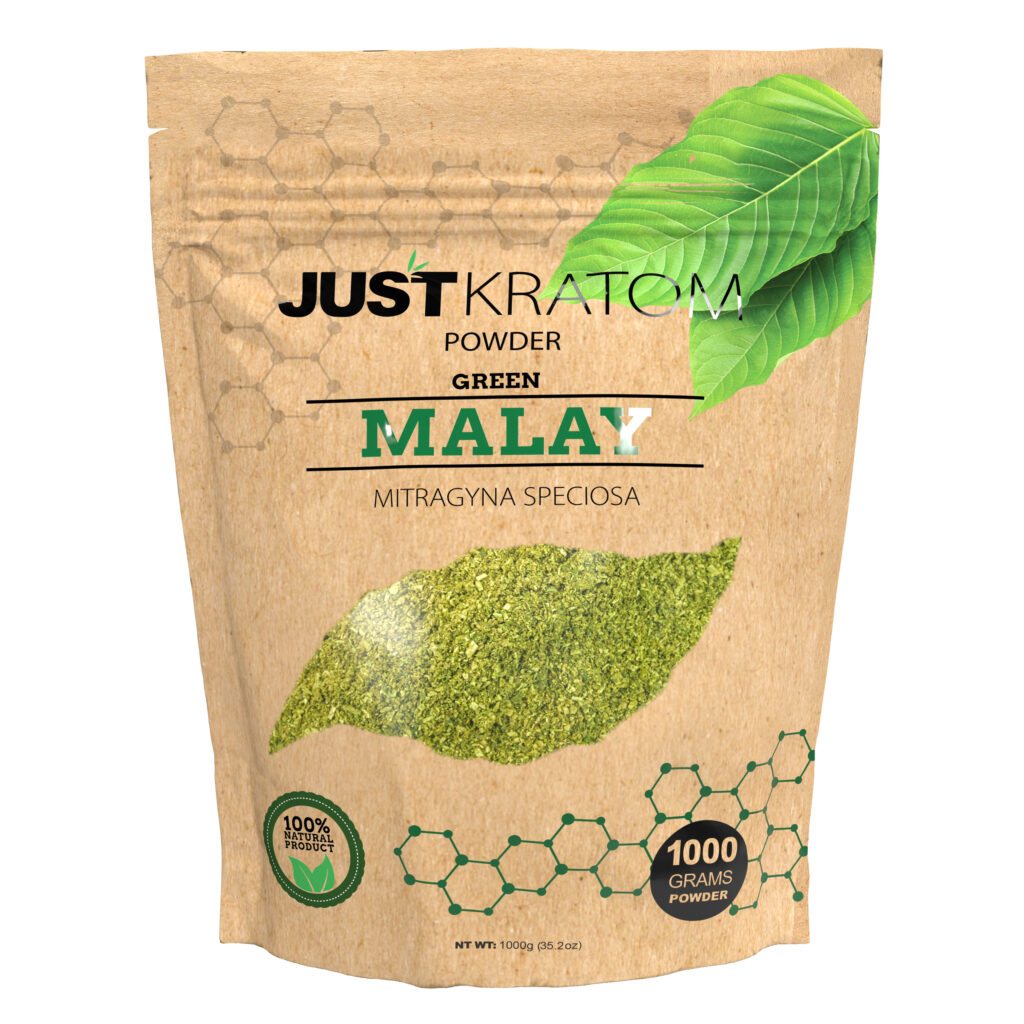Genus and Species
Kratom, scientifically classified as Mitragyna speciosa, is a tropical evergreen tree native to Southeast Asia. It belongs to the genus Mitragyna, which contains several species of trees found in the rainforest regions of Indonesia, Malaysia, and Thailand. The term “species” refers to a distinct group of organisms within a genus that can interbreed and produce fertile offspring. In this case, Mitragyna speciosa is the only recognized species within the genus that has been extensively studied for its potential medicinal properties.
Active Compounds
Kratom leaves contain numerous active compounds, primarily alkaloids. The most well-known are mitragynine and 7-hydroxymitragynine, which contribute to kratom’s diverse effects. These alkaloids interact with opioid receptors in the brain, leading to pain relief, mood elevation, and energy boosting properties.
Other active compounds found in kratom include speciogynine, paynantheine, and corynantheidine. These compounds contribute to kratom’s overall pharmacological profile, though their individual roles are still being investigated.
Alkaloid Profile
The alkaloid profile of kratom is complex and varied.
Beyond mitragynine and 7-hydroxymitragynine, other notable alkaloids include speciogynine, paynantheine, corynantheidine, and various others in smaller quantities.
The specific ratio of these alkaloids can vary depending on factors like the plant’s age, growing conditions, and the part of the plant used.
Pain Management
Kratom has gained attention as a potential natural remedy for pain management. Its alkaloid composition, particularly mitragynine and 7-hydroxymitragynine, is believed to contribute to its analgesic effects.
- Kratom appears to interact with opioid receptors in the brain, similar to traditional painkillers.
- Users report experiencing pain relief from various types of discomfort, including chronic pain, muscle aches, and headaches.
- It’s important to note that research on kratom’s effectiveness for pain management is still limited and more studies are needed to fully understand its mechanisms and long-term effects.
Anxiety and Depression
Anxiety and depression are two prevalent mental health conditions that significantly impact individuals’ lives. They often involve a complex interplay of genetic, environmental, and social factors.
Anxiety is characterized by excessive worry, fear, and apprehension. It can manifest as persistent anxiety, panic attacks, or phobias. Depression, on the other hand, is marked by feelings of sadness, hopelessness, loss of interest in activities, and changes in appetite or sleep patterns.
Both conditions can have debilitating effects on a person’s emotional well-being, relationships, work performance, and overall quality of life. Treatment options for anxiety and depression typically involve a combination of therapy, medication, and lifestyle changes.
Addiction Treatment

Kratom has been explored as a potential natural remedy for anxiety and depression.
- Some individuals report experiencing reductions in anxiety symptoms after consuming kratom, possibly due to its interaction with opioid receptors in the brain.
- There is limited scientific evidence to support kratom’s effectiveness for treating depression.
- More research is necessary to fully understand the potential benefits and risks of using kratom for these mental health conditions.
Other Potential Applications
Kratom has shown promise as a potential treatment for various other conditions, although further research is needed to confirm its efficacy and safety.
One area of exploration is the use of kratom for managing opioid withdrawal symptoms. Its alkaloids are believed to interact with opioid receptors, potentially alleviating some of the discomfort associated with detoxification.
Another potential application lies in treating attention-deficit/hyperactivity disorder (ADHD). Some anecdotal reports suggest that kratom may improve focus and reduce impulsivity in individuals with ADHD.
Gastrointestinal Issues
%h2% Gastrointestinal Issues %h2%
While kratom is being explored for its potential therapeutic benefits, it’s important to be aware of potential side effects, including gastrointestinal issues.
Some individuals may experience nausea, vomiting, diarrhea, or abdominal pain after consuming kratom. These adverse effects are often dose-dependent and tend to subside with continued use as the body adjusts.
It’s crucial to start with a low dose of kratom and gradually increase it as tolerated to minimize the risk of gastrointestinal distress.
If you experience persistent or severe gastrointestinal problems after using kratom, it’s important to consult with a healthcare professional.
Cardiovascular Effects
Kratom’s effects on the cardiovascular system are complex and not fully understood.
Some studies suggest that kratom may increase heart rate and blood pressure due to its interaction with opioid receptors.
However, other research indicates that kratom could potentially have a cardioprotective effect by reducing inflammation and oxidative stress.
More research is needed to clarify the long-term cardiovascular effects of kratom use.
Psychoactive Effects

Kratom’s potential psychoactive effects are multifaceted and arise from its complex alkaloid composition. The primary alkaloids, mitragynine and 7-hydroxymitragynine, interact with opioid receptors in the brain, leading to a range of effects. Users report experiences including pain relief, mood elevation, energy boosting, and relaxation. However, these effects can vary widely depending on factors like dosage, strain of kratom, and individual physiology.
It’s important to note that research on kratom’s psychoactive effects is still ongoing, and more studies are needed to fully understand its mechanisms of action and potential risks. Furthermore, kratom can have varying effects on individuals, and what may be a pleasant experience for one person could be undesirable or even harmful for another.
Drug Interactions
%h2% Drug Interactions %h2%
Kratom’s potential for interactions with other substances is a significant concern. Due to its effects on the central nervous system and its interaction with opioid receptors, kratom can potentially interact with a variety of medications and substances.
It is crucial to consult with a healthcare professional before using kratom if you are currently taking any medications, including prescription drugs, over-the-counter medications, supplements, or herbal remedies.
Some potential drug interactions of concern include:
- Opioid Medications: Kratom can enhance the effects of opioid medications, potentially leading to dangerous respiratory depression and overdose.
- Benzodiazepines: Combining kratom with benzodiazepines (e.g., Xanax, Valium) can increase sedation and risk of central nervous system depression.
- Other CNS Depressants: Kratom may interact with alcohol and other substances that depress the central nervous system, increasing the risk of adverse effects such as drowsiness, impaired coordination, and respiratory problems.
- Blood Thinners (Anticoagulants):** There is limited information regarding kratom’s potential interactions with blood thinners. However, it is advisable to exercise caution and consult a healthcare professional if you are taking anticoagulants.
This list is not exhaustive, and it’s essential to remember that individual responses to drug interactions can vary widely.
Withdrawal Symptoms
Withdrawal symptoms from kratom can be uncomfortable and range in severity. Common symptoms include:
• Fatigue and lethargy
• Muscle aches and joint pain
• Irritability, anxiety, and mood swings
• Headaches and dizziness
• Nausea and stomach upset
• Insomnia or difficulty sleeping.
The intensity and duration of withdrawal symptoms can vary depending on factors like the amount and frequency of kratom use, individual sensitivity, and underlying health conditions.
Current Regulations in Different Countries
Regulations regarding kratom vary significantly across different countries. Some countries have completely banned kratom, while others allow it with restrictions or no restrictions at all.
In the United States, kratom’s legal status is complex and varies by state. Some states have outright bans, while others permit its sale and use. The U.S. Food and Drug Administration (FDA) has classified kratom as a substance of concern due to potential health risks and has issued warnings against its use.
In Europe, the legal status of kratom is generally more restrictive. Several European countries, including Germany, Sweden, and Poland, have banned or restricted its sale and possession.
Southeast Asia, where kratom originates, has a diverse range of regulations. While it’s traditionally used in some Southeast Asian countries, many have implemented restrictions or bans due to concerns about its potential for abuse.
Australia prohibits the import, sale, and possession of kratom. Canada currently allows kratom to be imported but restricts its sale.
It’s essential for individuals considering using kratom to research the specific regulations in their country or region to ensure they are complying with the law.
Legalization Efforts and Controversies
Kratom legalization efforts are ongoing, fueled by arguments both for and against its accessibility. Proponents highlight kratom’s potential as a natural alternative for pain management, anxiety relief, and opioid withdrawal symptom reduction. They argue for its inclusion in regulated markets to ensure quality control and consumer safety, similar to other herbal supplements.
Opponents express concerns about kratom’s potential for abuse and addiction, pointing to reports of adverse effects like seizures and liver damage. They advocate for further research into its long-term health consequences before widespread legalization.
This debate is complex and multifaceted, involving considerations of public health, individual autonomy, and the balance between traditional uses and modern regulatory frameworks.
Clinical Trial Needs
Clinical trials are essential for evaluating the safety and efficacy of any substance, including kratom. The current lack of robust clinical trial data on kratom presents a significant barrier to its widespread acceptance as a legitimate medical treatment.
Several key areas require further investigation through well-designed clinical trials:
- Safety and Dosage:** Determining safe dosage ranges and identifying potential adverse effects associated with short-term and long-term kratom use is crucial.
- Efficacy for Specific Conditions:** Rigorous clinical trials are needed to assess the effectiveness of kratom for treating specific conditions, such as pain, anxiety, depression, and opioid withdrawal.
- Mechanism of Action: A deeper understanding of how kratom interacts with the body’s systems, particularly its effects on opioid receptors and other neurotransmitter systems, is essential.
- Drug Interactions: Extensive research is needed to fully characterize kratom’s potential interactions with medications and other substances.
- Long-Term Effects: ** Longitudinal studies are necessary to evaluate the long-term health consequences of kratom use.
Conducting comprehensive clinical trials on kratom will provide valuable insights into its potential benefits and risks, ultimately informing evidence-based guidelines for its safe and effective use.
Pharmacological Studies
Kratom is a tropical evergreen tree native to Southeast Asia. Its leaves contain various alkaloids, notably mitragynine and 7-hydroxymitragynine, which contribute to the plant’s diverse effects, including pain relief, mood elevation, and energy boosting.
While kratom shows promise as a natural remedy for conditions like pain, anxiety, and depression, more research is needed to confirm its efficacy and safety.
It’s important to note that kratom can have side effects, including gastrointestinal issues and potential cardiovascular risks. Its interaction with other medications is also a concern, requiring careful consultation with a healthcare professional before use.
The legal status of kratom varies widely across the globe, with some countries banning it entirely while others allow its sale with restrictions.
Further clinical trials are essential to fully understand the potential benefits and risks of kratom, informing evidence-based guidelines for its use.
Long-Term Effects Research
Long-term effects research on kratom is crucial due to its growing popularity as a natural remedy and potential risks associated with its use.
While some studies suggest potential benefits for pain management, anxiety, and depression, long-term studies are needed to assess the lasting impact of kratom consumption on the body.
Areas requiring further investigation include:
- Cardiovascular Health: Long-term effects of kratom on heart rate, blood pressure, and overall cardiovascular function need clarification.
- Neurological Effects: The potential for long-term neurological impacts, including cognitive decline or addiction, requires further study.
- Liver and Kidney Function: Monitoring liver and kidney function in individuals using kratom over extended periods is essential to identify any potential damage.
- Withdrawal Symptoms: Research is needed to understand the long-term implications of repeated kratom use and withdrawal, including potential for dependence and relapse.
Establishing clear guidelines for safe and responsible kratom use requires robust long-term research to ensure its potential benefits outweigh any potential risks.
Kratom Powder at Just Kratom – Buy now
- Traptox Aka Trapezius Botox Treatment Near Weybridge, Surrey - December 3, 2025
- Traptox Aka Trapezius Botox Treatment Near Hersham, Surrey - December 2, 2025
- Top Features Of The Vista Edge Series Vape You Should Know - December 1, 2025
